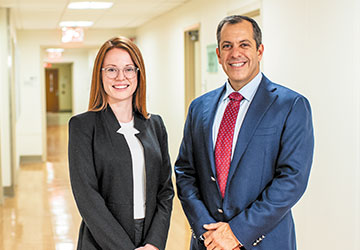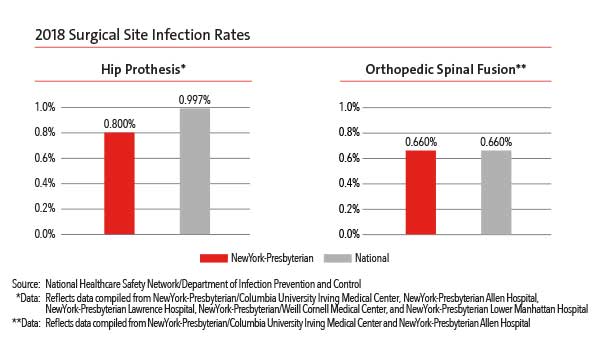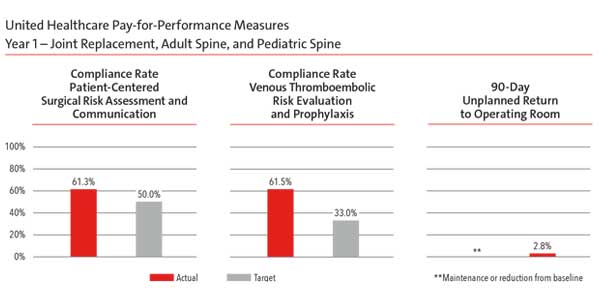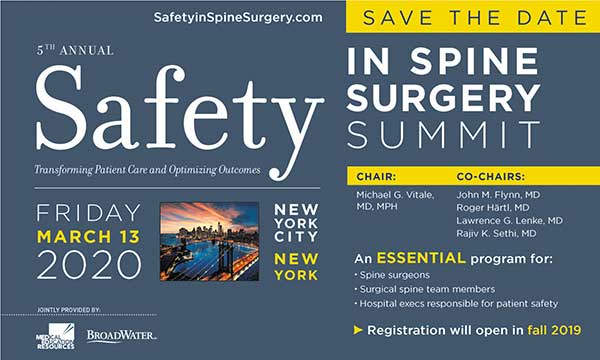Quality & Patient Safety
Optimizing Outcomes in Orthopedic Surgery

Abby Morris, MHA, Quality Officer, and Dr. Michael G. Vitale, Vice Chair of Quality and Strategy
The Department of Orthopedic Surgery at NewYork- Presbyterian/Columbia University Irving Medical Center continued to implement initiatives to improve quality, safety, and the overall patient experience across adult and pediatric orthopedic subspecialties under the direction of Michael G. Vitale, MD, MPH, Vice Chair of Quality and Strategy and also Chief of Pediatric Spine and Scoliosis Surgery. “This year, we emphasized our work in the area of total joint replacement, the largest cost of healthcare in orthopedic surgery,” says Dr. Vitale. “We do a large number of joint replacements and the question is how to deliver Abby Morris, MHA, Quality Officer, and Dr. Michael G. Vitale, Vice Chair of Quality and Strategy the very best outcome to that patient, not only surgically, but also across the whole episode of care.”
According to Dr. Vitale, it’s not unusual for patients requiring joint replacement to have high blood pressure, diabetes, or a medical history of other problems. “We’ve created a quantitative risk severity score that takes into account medical problems that can result from surgery, such as an infection or deep venous thrombosis. This allows us to address risks preoperatively and prepare for the full cycle of care – whether adding more surgeons or specialists in the OR, or planning for additional postoperative time in the ICU with more intense medical management.”
Dr. Vitale and his colleagues also piloted a preoperative multidisciplinary indications conference in pediatric orthopedics. “If you spend a little more time planning for any possible complication, outcomes can improve,” he says. “In our first conference in pediatric orthopedics, we brought in pediatricians, anesthesiologists, and other specialists who might be involved in the patient’s care. This gives us an opportunity to talk about the patient, to show X-ray review panels, and allow those present to share various options or express concerns. Having a diversity of opinion in the room often allows us to understand perspectives that a surgeon alone wouldn’t consider. We’re now extending the conferences to other specialties, including adult spine and total joint replacement. Our goal is to implement similar initiatives for every area of orthopedics.”

Source: National Healthcare Safety Network/Department of Infection Prevention and Control
*Data: Reflects data compiled from NewYork-Presbyterian/Columbia University Irving Medical Center, NewYork-Presbyterian Allen Hospital, NewYork-Presbyterian Lawrence Hospital, NewYork-Presbyterian/Weill Cornell Medical Center, and NewYork-Presbyterian Lower Manhattan Hospital
**Data: Reflects data compiled from NewYork-Presbyterian/Columbia University Irving Medical Center and NewYork-Presbyterian Allen Hospital
Collaborating with Insurance Companies
In partnership with several insurance companies, the Department of Orthopedic Surgery has further developed pay-for-performance programs, which outline routine processes and protocols and risk severity scores to better identify patients at highest risk for surgical complications.
“These partnerships provide us with the opportunity to develop a process where we routinely use and act on risk severity scores,” says Dr. Vitale. “From the patients’ point of view, it’s a home run because by understanding the risks more quantitatively, we are able to deliver better outcomes. From the physicians’ point of view, while more work is necessary upfront because patient workups and preoperative preparation are more involved, the result is that we can achieve much lower rates of complications following total joint replacement surgery. And the insurance companies recognize that the patient doesn't get a DVT or an infection, so it saves them a lot of money in the long run. Healthcare is going in the direction of having a better understanding of and incorporating a value equation.”


Sharing Expertise to Improve Spine Safety and Outcomes
Dr. Michael Vitale has been a thought leader in quality and patient safety initiatives in orthopedic surgery for more than a decade. For the last four years, he has chaired the Annual Safety in Spine Surgery Summit drawing spine surgeons, spine team members, and patient safety leaders from around the country. Most recently he has authored Safety in Spine Surgery: Transforming Patient Care and Optimizing Outcome, a major resource for spine surgeons and other healthcare professionals in the field.


